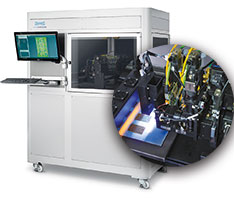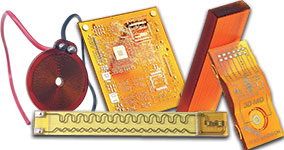
In the middle of 2017, I wrote a piece for Dataweek entitled ‘Celebrating 20 years of disruptive electronics’ wherein I concluded with the words: “Disruptive electronics can only really be made possible through stable partnerships for success. Here’s to the next 20 years.”
Taking us forward, EDA Technologies is delighted to again bring world-leading electronics technologies to the southernmost tip of the African continent. This time though, I must admit it made me eat my words. Some years ago, I confidently said: “You cannot just press a button and expect a PCB to come out.” Well, in what is a major disruption to the electronics industry, 3D PCB printing is now a sure reality, thanks to Nano Dimension’s innovative Dragonfly Pro 2020 additive printer.

CNET described the Dragonfly printer as ‘The Holy Grail of 3D printers’. EDA Technologies is proud to be associated with Nano Dimension as the local value-added reseller of their majorly disruptive Dragonfly 3D printer. I had the pleasure of meeting Simon Fried in California in February this year, Simon is the co-founder of Nano Dimension and leads its activities overseeing business development. A smirking Simon referred to my statement above and apologised for making me eat my words. I gracefully accepted his apology.
Nano Dimension is disrupting, reshaping and defining the future of how electronics products are made. Imagine being able to 3D-print fully-functional devices such as PCBs, sensors, antennas, moulded interconnect devices (MIDs), conductive geometries and more – in just a few hours. The rapid prototyping capabilities of the DragonFly 2020 Pro 3D printer completely transform the way product development teams work – no more waiting weeks for a custom prototype that must be made offsite. Being able to rapidly produce and test new circuitry is an invaluable capability in our fast-paced competitive world.

In a survey conducted by the Aberdeen Group, improved time-to-market was identified as a primary business objective, ahead of the need to reduce product cost and improve product quality. What I found more fascinating from the Aberdeen report is that 88% of best-in-class companies launch their products on time. The survey shows that electronics companies need product development cycles that are shorter, more agile and efficient. In today’s fast-paced world, that means everything.
Until now, standard lead times for complex multilayer prototypes could stretch to several weeks, often accompanied with fervent hopes for the first version to work without the need for another costly and deadline-threatening PCB revision. Traditional PCB subtractive manufacture is bound by a number of fixed processes, which in effect haven’t changed that drastically in many decades.
3D printing has revolutionised product design and manufacturing by using additive manufacturing methods to produce prototypes and custom parts in a fraction of the time required by traditional subtractive manufacturing. Product development teams no longer have to wait days or weeks for a custom PCB prototype because the DragonFly 2020 3D printer offers the capability to 3D print an entire multilayer board, part of it, or just a test fixture at any given time. In addition, the full range of PCBs can be printed, including interconnections, through-holes and complex geometries – without etching, drilling, plating or waste. The application possibilities are endless, including flexible, rigid PCBs and embedded components.
Nano Dimension’s extremely precise inkjet deposition system allows for simultaneous 3D printing of conductive silver nanoparticle ink (metal) and insulating ink (dielectric polymer). This sets new standards for accuracy, complexity and speed in the fields of both 3D printed electronics and professional electronics development. Upon completion of a 3D print job, there is no need for post-processing. Multi-material 3D printing is game-changing, allowing designers and engineers to print polymers and metals together to create a functional part. This is a revolutionary approach to making electronics with the potential to be more compact, denser and ultimately non-planar.
Futurists list a number of new technologies as the highest growth markets for the immediate future, and these include: drones, the Internet of Things (IoT), artificial intelligence (AI), robotics, autonomous transport and wearable electronics. Since printed electronics are at the heart of most of these associated devices, these sectors can all benefit greatly from a more agile approach to developing products. For sure, South African companies should embrace advancements that can enable them to be more agile, and more importantly, get winning products to the local and global market before anyone else.
The DragonFly Pro 2020 3D printer empowers progress, encourages innovation, lessens development risks and probably most importantly, enables faster time-to-profits. That should mean good news in any language.
EDA Technologies will have a DragonFly 2020 Pro 3D printer in a few months’ time, the first for the southern hemisphere. Here’s to another chapter of electronics development agility.
| Tel: | +27 12 665 0375 |
| Email: | [email protected] |
| www: | www.edatech.co.za |
| Articles: | More information and articles about EDA Technologies |

© Technews Publishing (Pty) Ltd | All Rights Reserved